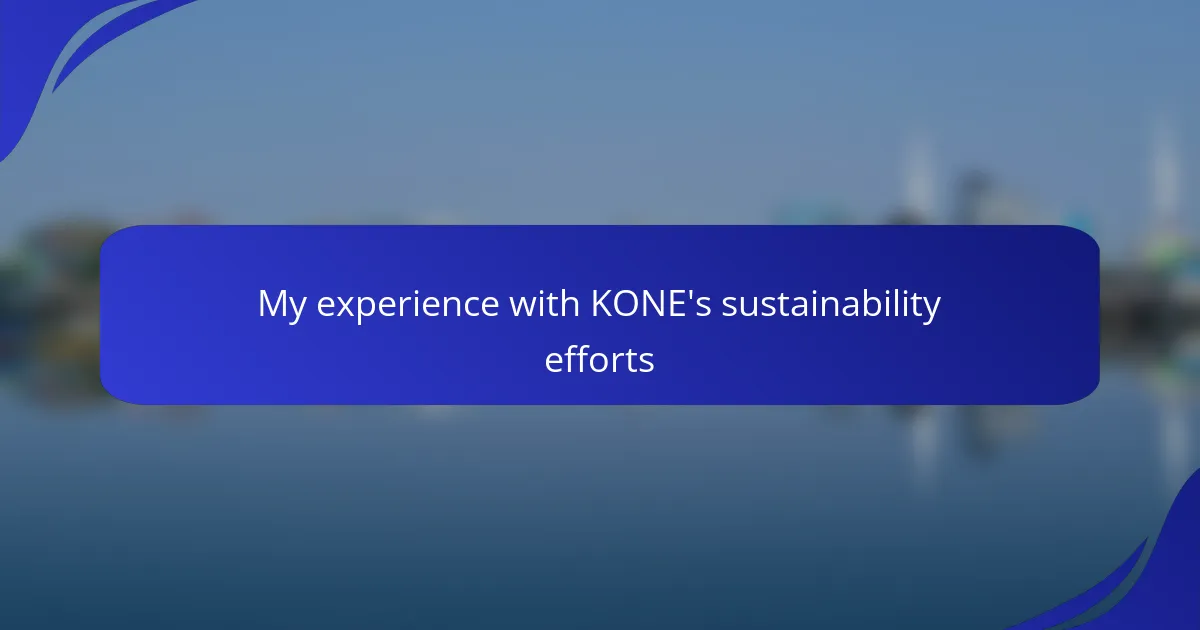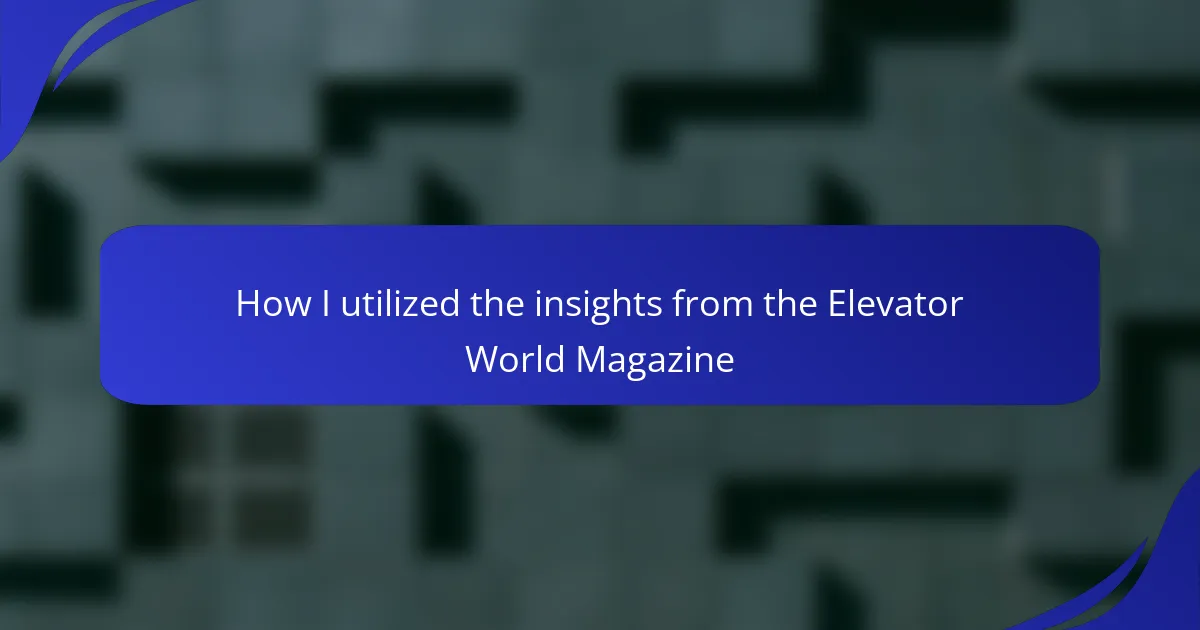Key takeaways
- The invention of the safety elevator by Elisha Otis in the 19th century significantly improved urban architecture and safety, enabling the construction of taller buildings.
- Schindler has advanced elevator technology through innovations like machine room-less (MRL) systems and smart technology integration, enhancing energy efficiency and user experience.
- Future trends in elevator technology include smart systems, IoT integration, and AI, aimed at improving efficiency and sustainability in vertical transportation.
- Schindler prioritizes safety with advanced features such as redundant braking mechanisms, improving user confidence and overall experience in elevators.
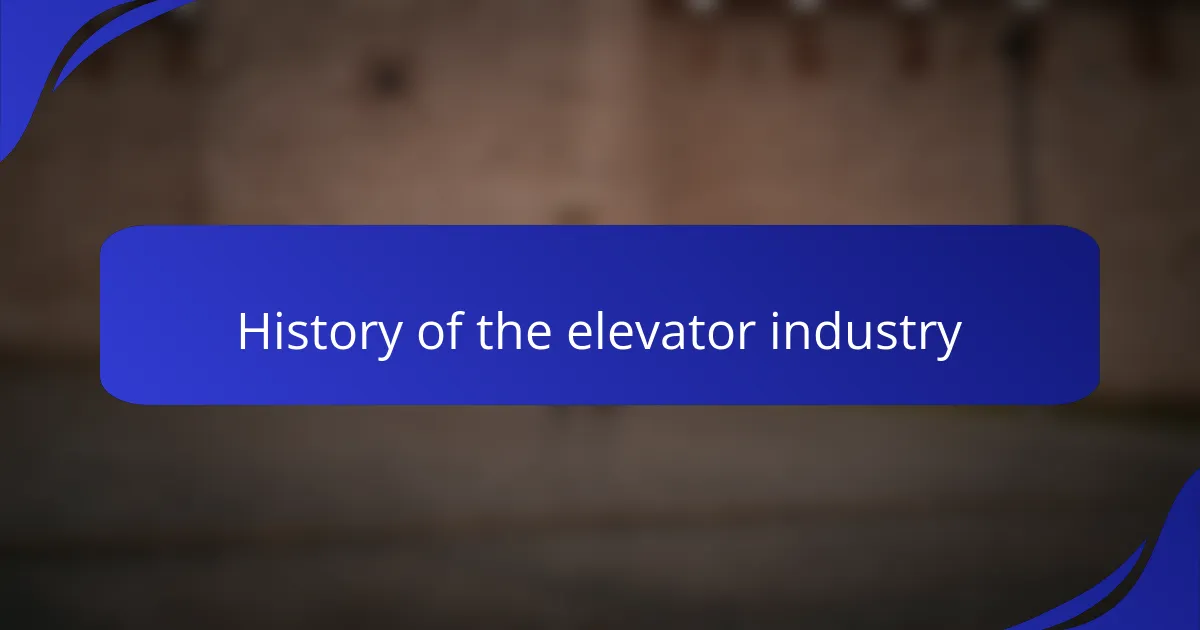
History of the elevator industry
The history of the elevator industry is fascinating and spans several centuries. The concept of lifting people and goods began with simple hoists and pulleys, evolving into what we recognize today. Can you imagine navigating a bustling city without modern elevators? I often think about how different urban living would be without these essential machines.
In the 19th century, advancements really took off, particularly with the introduction of the safety elevator by Elisha Otis. His invention not only made elevators more reliable but also safer, changing the skyline of cities. It’s remarkable to reflect on how this innovation allowed for the construction of taller buildings, which transformed urban landscapes and lifestyles.
As I delve deeper into this topic, I find it intriguing how elevators have also shaped social dynamics. The ability to reach higher floors broke down spatial barriers, allowing residential and commercial spaces to coexist in harmony. What transformations in daily life do you think stemmed from this simple yet revolutionary invention?
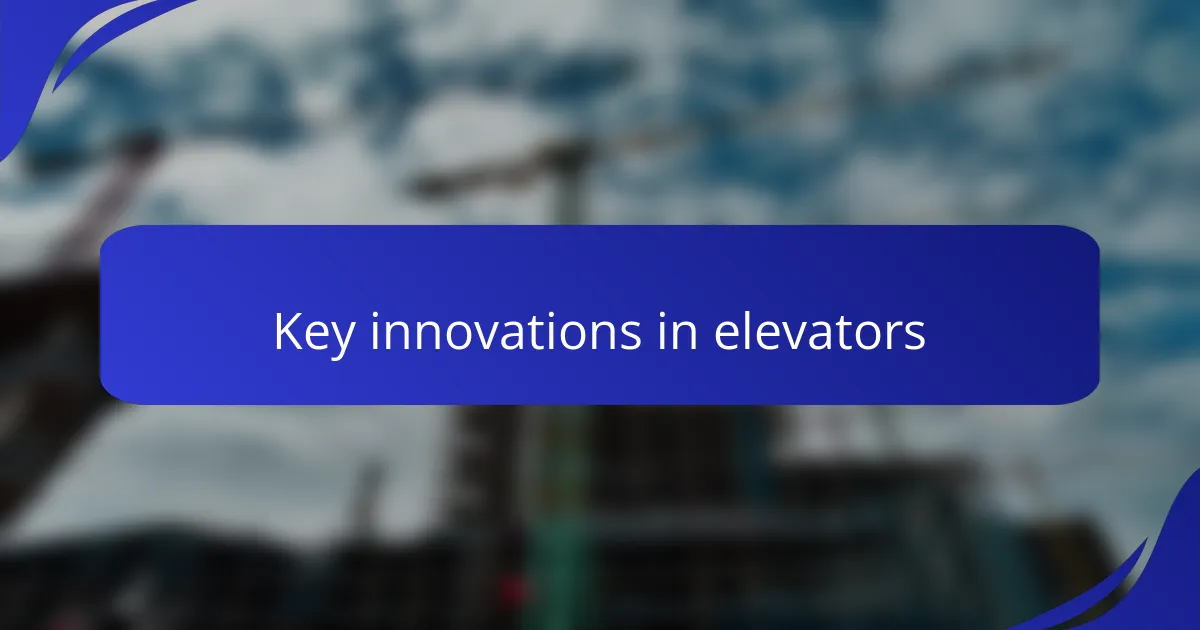
Key innovations in elevators
The introduction of electric elevators in the late 19th century marked a pivotal moment in the industry. I can still remember my first ride in an old electric elevator, and the smoothness of the lift was nothing short of mesmerizing. This innovation not only increased efficiency but also opened the doors—quite literally—to high-rise buildings that redefine urban living.
Another significant advancement was the development of computerized control systems in the late 20th century. I recall when I first learned about the intricate algorithms that optimize elevator routes. This innovation can reduce wait times significantly, making our daily commutes more convenient. Have you ever wondered how much more frustrating city life would be without this technology?
More recently, the push towards energy-efficient elevators has become a hot topic. I’ve been amazed by how today’s designs focus on sustainability, utilizing regenerative drives to harness energy typically wasted during operation. This shift not only reflects a growing awareness of our environmental impact but also shows how innovations in the elevator industry continue to evolve in response to societal needs. Isn’t it fascinating how something so ordinary can lead to extraordinary changes?
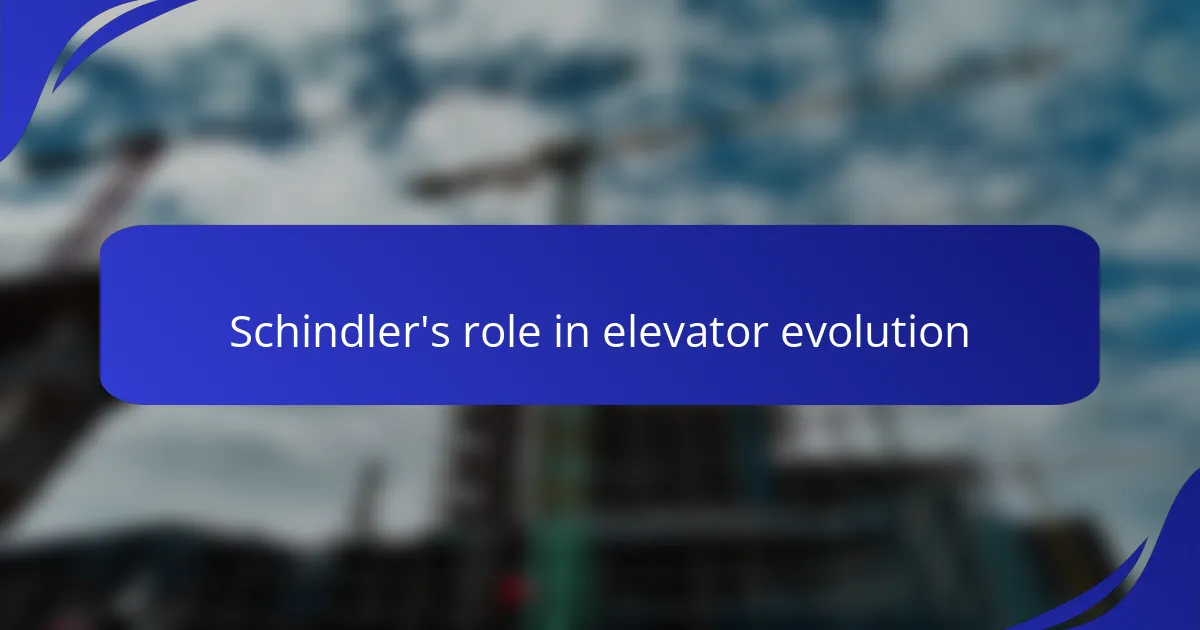
Schindler’s role in elevator evolution
Schindler’s influence on the elevator industry cannot be overstated. I still remember the first time I came across a Schindler elevator while visiting a historical building; it was woven into the very fabric of the structure, a marvel of engineering that combined aesthetic appeal with cutting-edge technology. Their advancements, particularly in safety features and energy efficiency, have truly set the bar for modern elevators.
- Pioneered the use of electronic drives, enhancing energy efficiency and ride quality.
- Introduced advanced safety systems, including redundant braking mechanisms that ensure passenger security.
- Innovated with smart building technology, allowing elevators to communicate and optimize their operation in real-time.
- Focused on sustainability, incorporating eco-friendly materials and practices in elevator manufacturing.
- Created user-friendly interfaces that prioritize accessibility for all individuals.
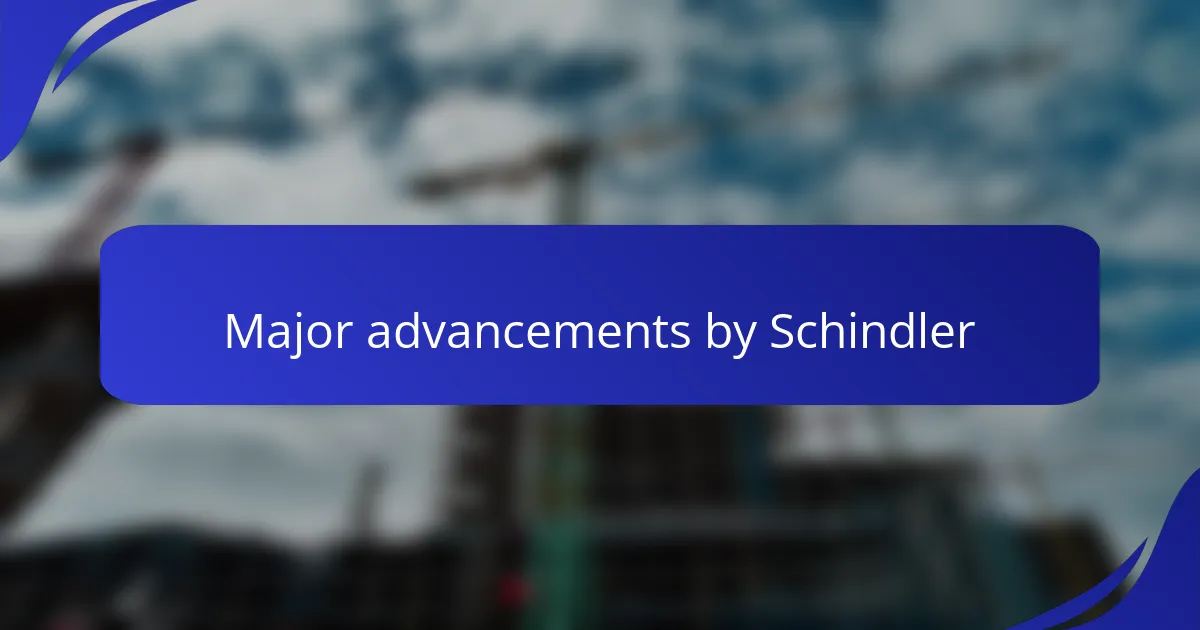
Major advancements by Schindler
When I reflect on Schindler’s journey in the elevator industry, several major advancements come to mind that have truly transformed how we experience vertical transportation. For instance, the introduction of the machine room-less (MRL) elevator system is a game changer. This innovation not only saves space in buildings but also reduces energy consumption, which aligns perfectly with our modern emphasis on sustainability. I remember visiting a building with an MRL system, and being awestruck by how seamlessly it functioned without the bulky machinery overhead.
Another key advancement is Schindler’s commitment to smart technology integration. Their elevators now feature sophisticated control systems that enhance user experience and operational efficiency. I’ve seen firsthand how these innovations streamline operations in high-traffic buildings, making everyday life smoother for everyone.
- Machine room-less (MRL) elevator systems: Space-saving and energy-efficient.
- Smart technology integration: Enhances user experience and operational efficiency.
- Advanced safety features: Ensuring passenger safety has always been a priority.
- Remote monitoring capabilities: Real-time performance tracking for better maintenance.
- Sustainability initiatives: Aligning elevator design with eco-friendly practices.
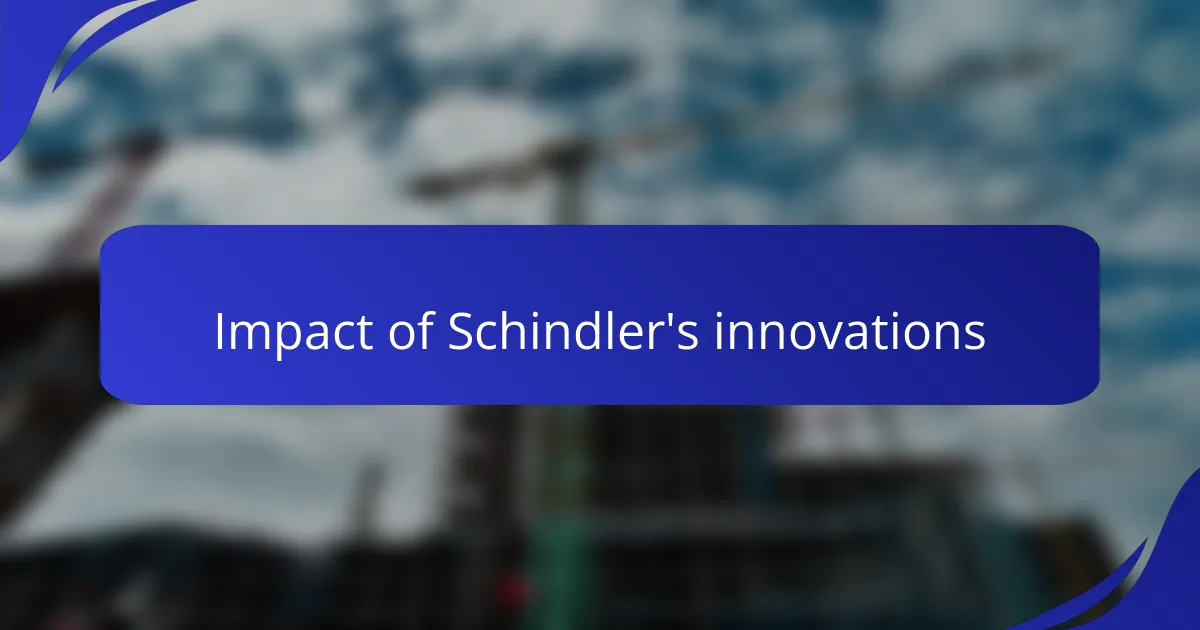
Impact of Schindler’s innovations
The impact of Schindler’s innovations on the elevator industry cannot be overstated. From the introduction of innovative safety mechanisms to the development of energy-efficient designs, Schindler has reshaped how we think about vertical transportation. I remember my first encounter with a Schindler elevator; it was clear that more than just functionality had been prioritized; the emphasis on user experience and safety truly stood out.
One of the most significant advancements was the introduction of the world’s first machine-room-less (MRL) elevator. This not only saved space in buildings but also streamlined maintenance processes. I’ve always found it fascinating how technical advancements can enhance architectural design, providing both functionality and aesthetic appeal.
Now, let’s take a look at how Schindler’s innovations have compared to those of its competitors through the years.
| Innovation | Schindler | Competitors |
|---|---|---|
| Safety Features | Advanced safety systems, including redundant braking | Standard safety brakes |
| Energy Efficiency | MRL elevators with lower power consumption | Traditional elevators requiring more energy |
| Modern Design Integration | Seamless design that complements architecture | Functional but less aesthetically integrated |
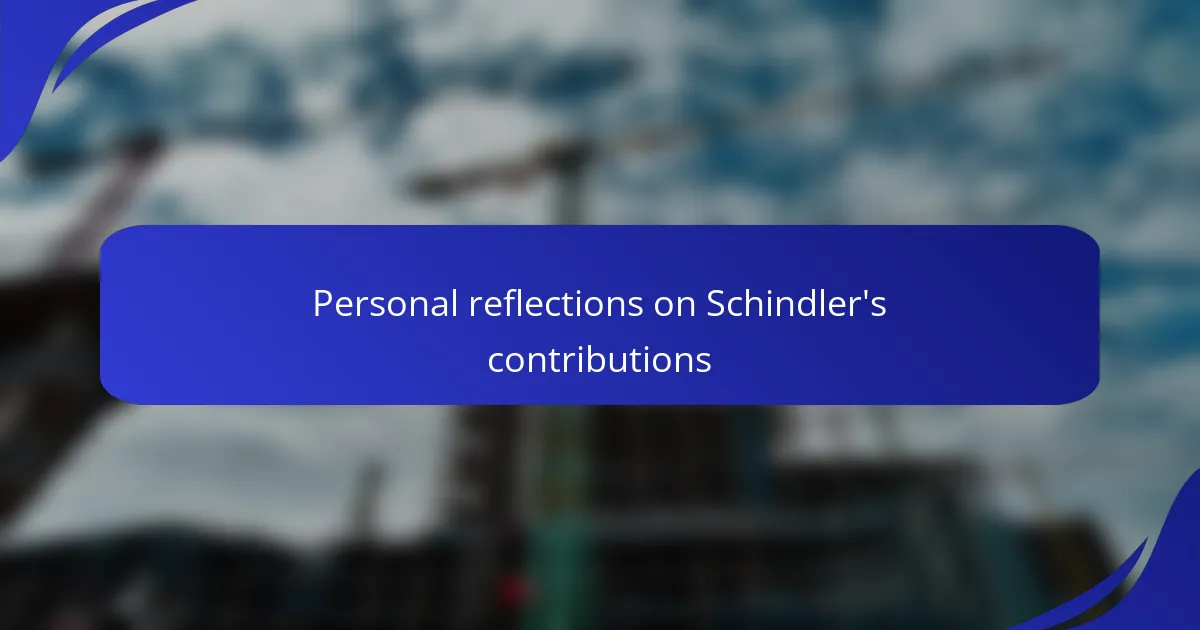
Personal reflections on Schindler’s contributions
Reflecting on Schindler’s contributions, I’m often struck by how their innovations have reshaped not only buildings but the very experience of moving within them. I remember stepping into a Schindler elevator and feeling an immediate difference—the smooth ride and modern controls made me realize how far we’ve come. It’s remarkable to think about how technology has transformed our daily commutes and elevated our expectations for vertical transportation.
One moment that stands out to me was when I witnessed the installation of a Schindler MRL system in a newly constructed high-rise. The design eliminated the bulky machine room, allowing for more floor space and a cleaner aesthetic. It took me a while to appreciate how such a straightforward design choice could also contribute to energy efficiency—suddenly, the building felt more harmonious with its environment. Have you ever considered how these innovations can lead to a complete overhaul of not just practical use but also architectural beauty?
I’m especially fascinated by how Schindler has prioritized safety without compromising style. The integration of advanced safety systems, like redundant braking mechanisms, instills a sense of security in all who use their elevators. I often think about my own experiences in older elevators, where I could feel an unsettling sense of vulnerability. With Schindler, that anxiety simply melts away, which really speaks to the brand’s commitment to improving the user experience. How important is safety in your day-to-day life? For me, it’s essential—and that’s where Schindler shines bright in my eyes.
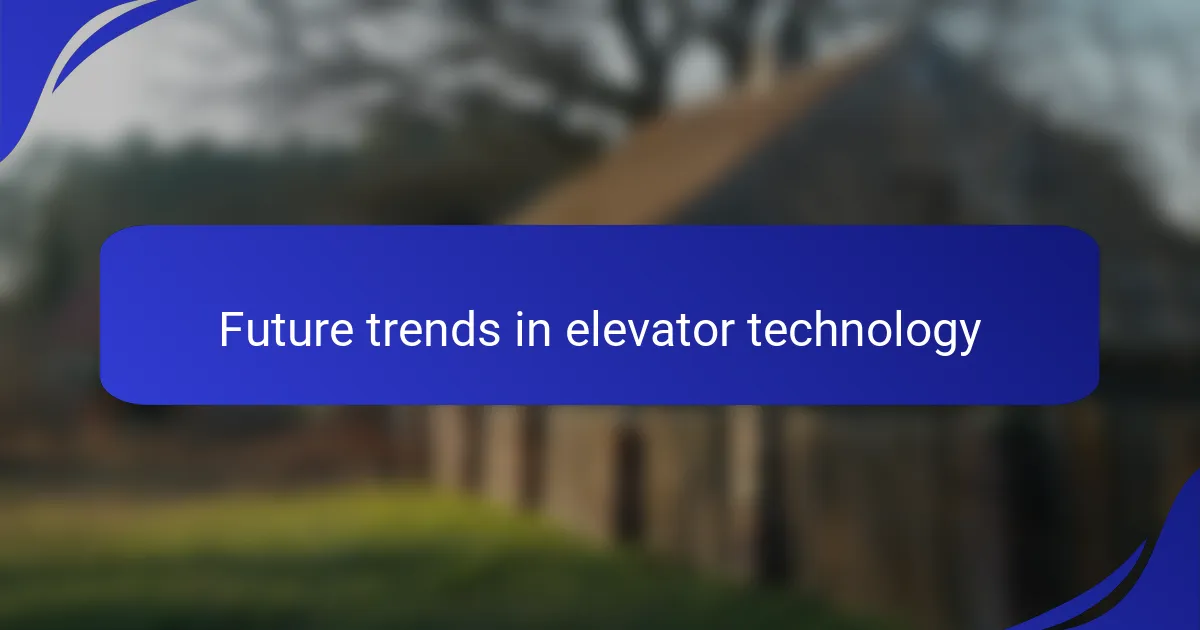
Future trends in elevator technology
The future of elevator technology is incredibly exciting. I’ve always been fascinated by how innovation can transform something as fundamental as an elevator. With advancements like smart elevators that learn usage patterns and AI-powered systems improving efficiency, the way we move within buildings is set to change dramatically. These developments not only enhance convenience but also promote sustainability by optimizing energy use.
As I reflect on the evolution of elevator technology, I can’t help but think about how each step forward has a profound impact on our daily lives. For instance, the integration of IoT (Internet of Things) into elevator systems could lead to predictive maintenance, reducing downtime, and enhancing safety. This kind of proactive approach is something I’ve encountered firsthand in modern buildings, where the technology just works seamlessly.
Here are some future trends to watch for in elevator technology:
- Smart Systems: Elevators that adapt to user behavior, reducing wait times.
- IoT Integration: Enhanced connectivity for real-time monitoring and predictive maintenance.
- AI and Machine Learning: Algorithms that optimize routes based on traffic patterns.
- Sustainability Innovations: Use of energy-efficient motors and regenerative drives that capture energy during operation.
- Advanced Safety Features: Real-time diagnostics and emergency communication systems to ensure user safety.

